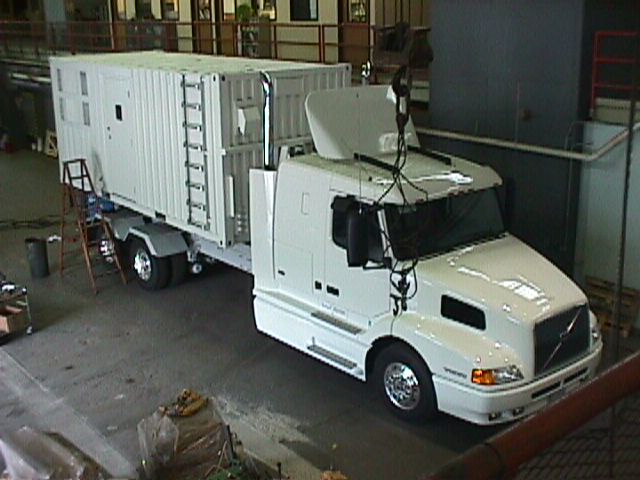Diesel Aerosol Sampling Methodology and the Mobile Laboratory
Sponsored by Coordinating Research Council (CRC) and the Department of Energy/National Renewable Energy Laboratory (DOE/NREL)
Co-sponsored by:
Engine Manufacturers Association
Southcoast Air Quality Management District
California Air Resources Board
Cummins
Caterpillar
Volvo
In collaboration with:
West Virginia University
Tampere University
Paul Scherrer Institute
Carnegie Mellon University
Desert Research Institute
UC Davis

The Mobile Emissions Laboratory (MEL)
Swanson, J. J., D. B. Kittelson, W. F. Watts, D. D. Gladis, M.V. Twig. 2009.
Influence of Storage and Release on Particle Emissions from New and Used CRTs.
Atmospheric Environment, 43:3998-4004. Link To Paper
Abstract
This paper describes the results of three experiments performed with Continuously Regenerating Traps (CRTs®) in a controlled laboratory setting to elucidate the effects of fuel sulfur content, filter age, and storage and release effects on particle concentration. In the first experiment, a new CRT was tested using near zero sulfur Fischer-Tropsch fuel and low sulfur lubricating oil (420 ppm). The objective was to measure particle emissions from an emission control device that had not previously been exposed to sulfur under a variety of operating and dilution conditions. Next, a used CRT was evaluated using the same fuel and lubricating oil. Finally, the used uncatalyzed Diesel particulate filter (DPF) from the used CRT was replaced with a new, uncatalyzed DPF. The emissions from the used Diesel oxidation catalyst (DOC) + new DPF were evaluated and compared to those of the used CRT.
Our laboratory results show that particle number emissions from the new CRTs are 99.9% lower than equivalent used CRT data collected on-road at an exhaust temperature of 370 °C. Even as the new CRT temperature was increased to almost 400 °C, emission levels were still at background levels for roadway aerosol and no nucleation mode was observed. With the used CRT, the nucleation mode particle number concentration increased sharply at an exhaust temperature of about 380 °C and remained high for the duration of the test. Mass emissions were estimated and found to exceed US EPA on-road standards. The used DOC + new DPF led to essentially the same number emissions as the used CRT, suggesting that these emissions arise mainly from release of sulfates stored by the DOC and not the uncatalyzed DPF.
CRC E-43: Diesel Aerosol Sampling Methodology
CRC Project Summary (19KB)
CRC E-43 Exectuive Summary (19KB)
CRC E-43 Technical Summary (81KB)
Impact of Low-Emission Diesel Engines on Underground Mine Air Quality (338K) Appendices (297K) Project Summary (23K)
by Susan T. Bagley, Wintrhop F. Watts, Jr., Jason P. Johnson, David B. Kittelson, John H. Johnson, and James J. Schauer (2002)
Presentation to the 11th CRC On-road Vehicle Emissions Workshop, San Diego, CA, March 26-28, 2001
Presentations by David Kittelson (MS PowerPoint)
CRC Presentation (327K)
Royal Society Presentation (281K)
UC Davis Presentation (340K)
Papers
JAAST Paper (60K)